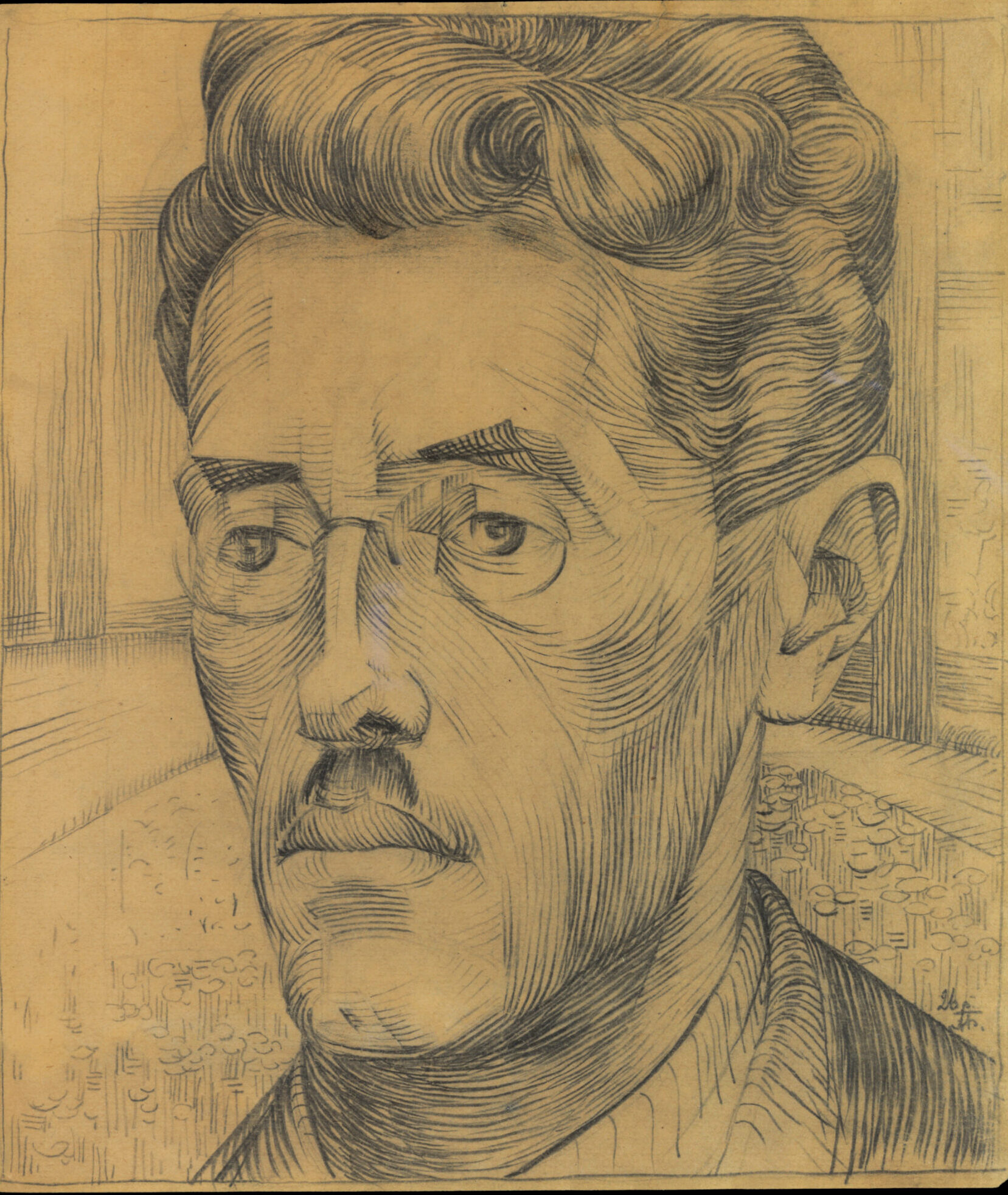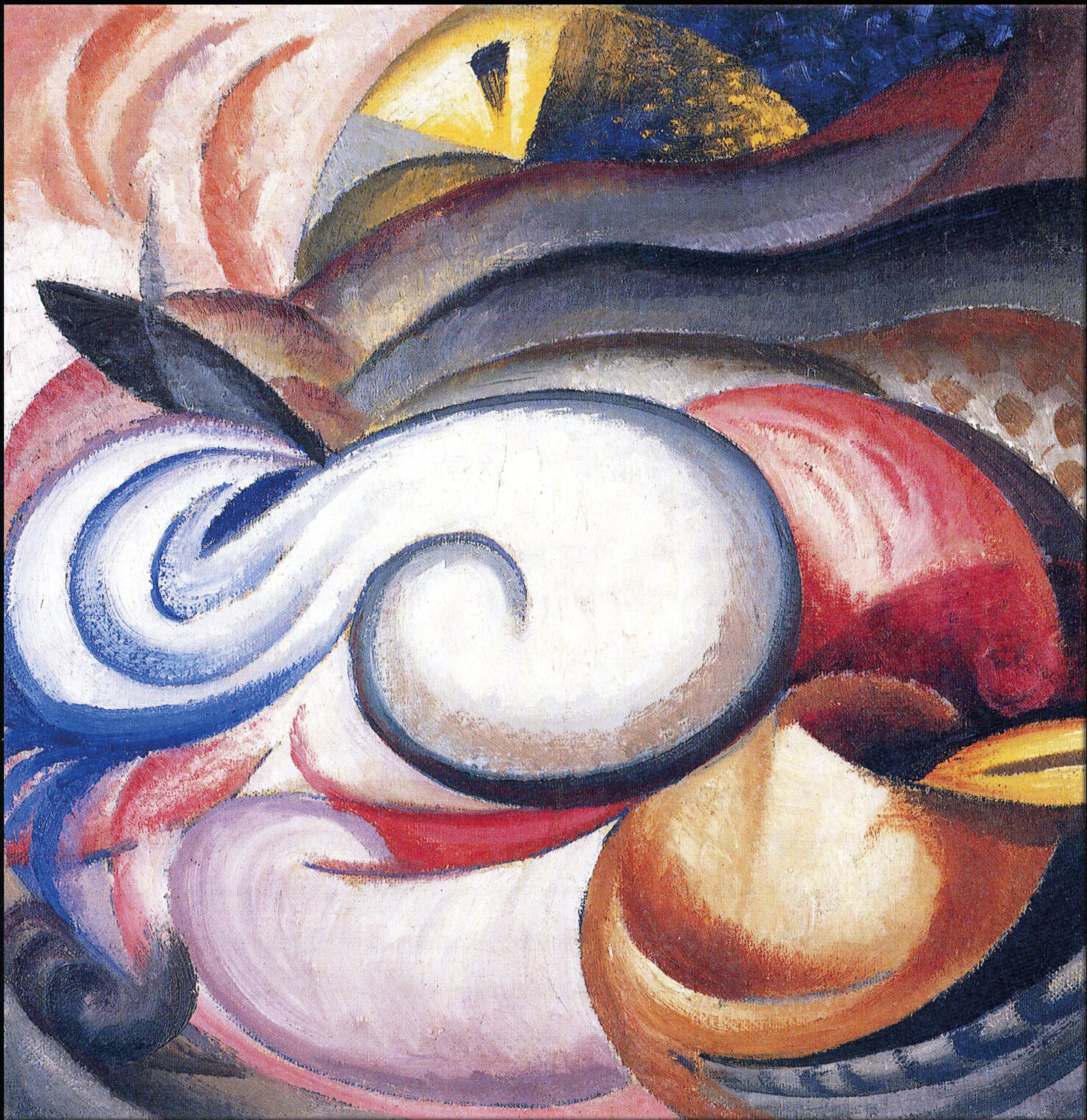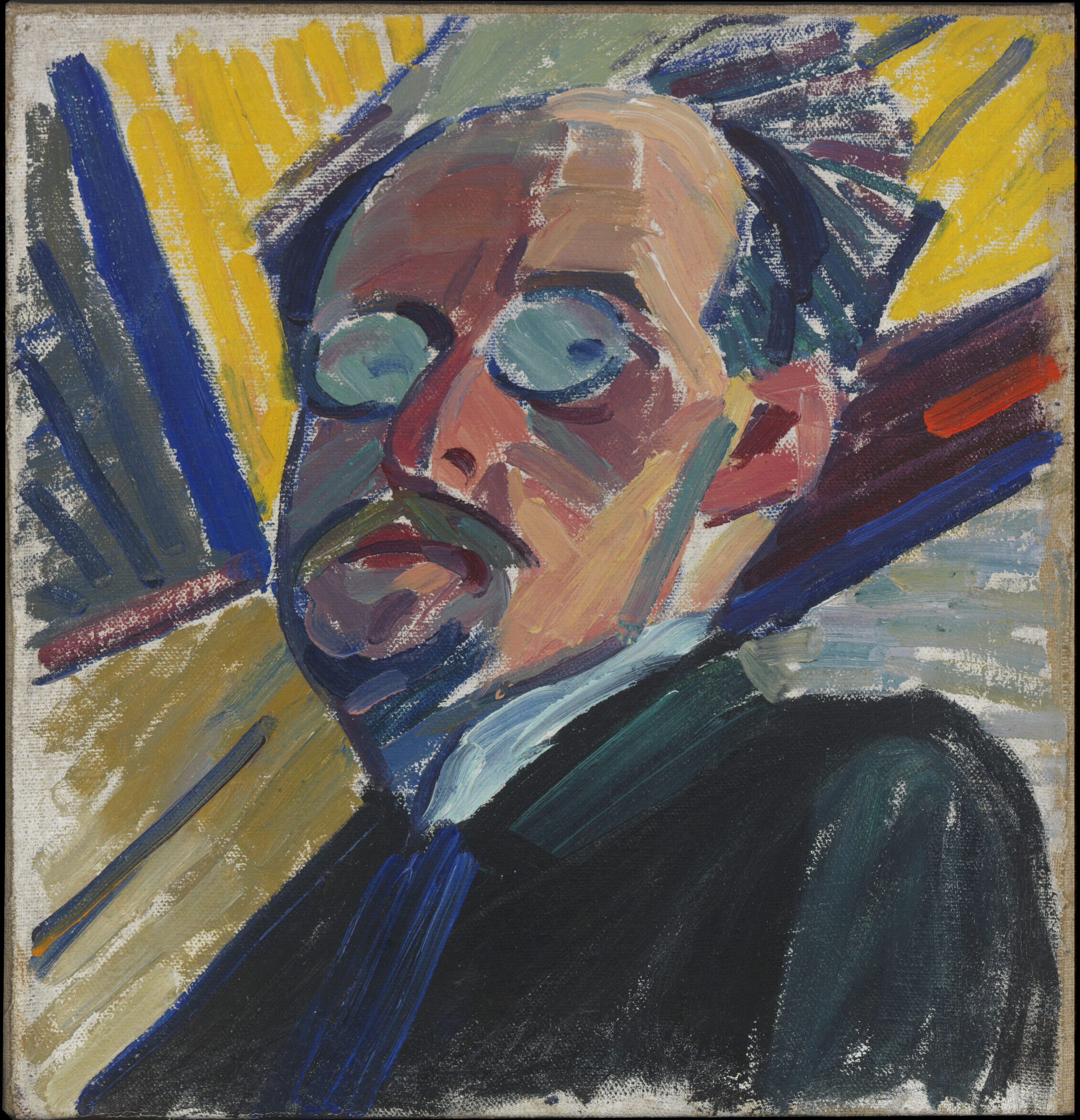


Oleksandr Bohomazov attended Kherson Agricultural School 1896-1902 before enrolling at the Kyiv Art School 1902. He was expelled in 1905 with his friend Archipenko. He studied under Svyatoslavsky, then in Moscow under Rerberg and Yuon, before resuming studies at the Kyiv Art School from 1908 to 1911 after which he travelled to Finland. In 1914 he showed 88 works at the Kyiv exhibition “The Ring” and wrote his ground-breaking thesis “Painting & Elements”, analysing line, form, colour and plane (the manuscript is now in the Museum of Literary Archives in Kyiv). He taught in Armenia 1915, returning to Kyiv in 1917. He was involved in Agitprop 1919-21, then taught at the Kyiv Art Academy for the rest of his life. In 1927 he embarked on a revolutionary triptych, Sawyers, but died before completing it from tuberculosis that had plagued him throughout the 1920s.
Oleksandr Bohomazov (1880-1930) is a Ukrainian artist, teacher and a cubo-futurism theoretician. He named a regular square a perfect shape in art a year before the conceptual Black Square by Kazimir Malevich emerged. He gave artistic work an independent place in the “artist – painting – viewer” triangle. He worked out a formula describing the interaction of shape and colour with an audience’s emotional perception. All these innovations in art theory were produced by Bohomazov, in a purely intuitive way, using his own analysis and understanding, absent close contact with representatives of prominent art directions which were actively developing in European modernist art of the early 20th century.
Bohomazov did not study in Europe or enjoy an active life in the West like his friends, Ukrainian artists Alexandra Exter and David Burliuk. His friendship with them however fed his artistic search. Thanks to Exter, who travelled between Kyiv, Paris and Milan, Bohomazov discovered Italian futurism. His theoretical works are not as well-known as those by his colleague Kazimir Malevich. The world started learning about him only in the late 1960s – almost 30 years after his death. If not for Bohomazov’s widow, Vanda Monastyrska, his work and memory could have been lost in the black hole of Soviet cultural policy.
Throughout his life he stubbornly made his way in the avant-garde protest movement: from calm impressionism and symbolism through futurism to explosive cubo-futurism. He is not a “Ukrainian Picasso” as the journalists often call him; he is a creator of a global avant-garde with talent equivalent to that exhibited in French cubism.